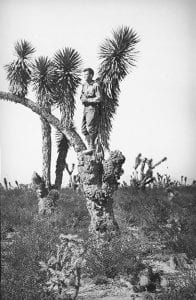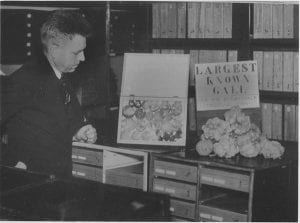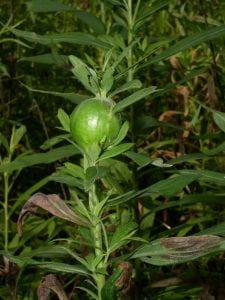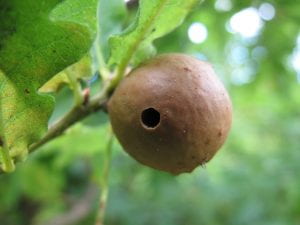
Kinsey and the Wasps: Mapping a Journey
Part One, in Which We Meet the Man and the Wasp
In a highly entertaining article for Cabinet, an online magazine devoted to cultural curiosities of all sorts, British author Christopher Turner gives a hint of Alfred C. Kinsey’s intense commitment to field research. Turner notes that in Kinsey’s attempt to discover the exact origin of the gall wasp species, he “traveled eighteen thousand miles, twenty-five hundred on foot, and visited thirty-six states.” Though the species-origin quest ultimately proved unsuccessful, Kinsey amassed a stunning collection of some 7.5 million specimens, which now reside in the American Museum of Natural History.

In the interest of honoring invisible labor, Kinsey did not do all this by himself. There are plenty of anecdotes from graduate assistants who traipsed around with him over miles of unforgiving terrain or who, back in the lab, had to learn to hand-write large amounts of data on impossibly small insect tags, all to Kinsey’s exacting specifications.
But what even is a gall wasp, you might ask, and why on earth would anyone go to that much trouble collecting millions of them? I did not write the book on gall wasps, but since I am learning about the fellow who did, allow me to share some basics: gall wasps are tiny; most, if not all, are flightless; they can be found in North America, Europe, and elsewhere, and it turns out Arizona is very popular among the wee winged ones.
You might be wondering what distinguishes a gall wasp from the myriad other wasps out there. The answer to that question is fascinating—a mixture of glorious and gross of the sort one only encounters in nature. Formally speaking, a gall is “any abnormal vegetable growth or excrescence on plants, caused by various agents, as insects, nematodes, fungi, bacteria, viruses, chemicals, and mechanical injuries.” Put more simply, plants develop these growths to protect against attacks, whether they be fungal infections or unwelcome guests. To the limited extent that I understand it—read: my explanation would almost certainly prompt an entomologist eye roll—a gall wasp, looking for a cozy place to lay eggs, knows how to do just enough damage to a plant that it forms a gall. Once the eggs hatch, the larvae remain safely ensconced within the gall. Until they get hungry, that is, at which time they eat it from the inside out so they can grow up to be healthy and strong (but still tiny). In the normal course of events, this process does not hurt the host plants, though for all we know they might feel self-conscious about the unsightly growth. Or the squirming larvae might tickle. We’ll have to rely on future botanists to find out for sure.

As I was reading about this phenomenon in Kinsey’s The Gall Wasp Genus Cynips: A Study in the Origin of Species, I realized that I have probably seen galls without knowing what they were: in fact, most of us probably have. The few galls shown below can’t do justice to the incredible variety to be found on plants worldwide, and I confess I have developed a new appreciation for them.




As a rule, I am strictly anti-wasp, so I’m warming less rapidly to the genus cynips itself. But who knows, over time they might grow on me as well. Though not literally, I hope. So why am I bending your ear on this subject in the first place? Because for my internship project for the Master’s in Library Science degree, I have chosen to digitize all the Kinsey-owned maps here at Herman B Wells Library, Indiana University Bloomington, including some one-of-a-kind, handmade maps full of gall wasp data. To learn more about the project and the weird world of wasps, stay tuned for the next blog installment!
Heather Sloan is an ILS Master’s student with a specialization in Digital Humanities. She is a full-time staff member in the Media Services and Government Information, Maps & Microform Services (GIMMS) departments of Herman B Wells Library. She has a Doctor of Musical Arts degree in Percussion Performance from SUNY Stony Brook, and her interests include Caribbean folkloric music, Latin music, record collecting, and design in popular culture. Her Digital Humanities work focuses on intersections between digital and humanitarian mapping, the environment, and arts advocacy. She is a 2019-2020 HASTAC Scholar.
Leave a Reply